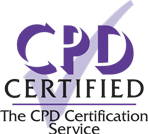
Around seven out of 10 patients with obsessive compulsive disorder (OCD) will benefit from cognitive behavioural therapy in the form of exposure and response prevention, or medication, or a combination of the two treatments. However, if you do not experience symptom relief with these therapies, you may find Repetitive Transcranial Magnetic Stimulation (rTMS) to be more effective. rTMS uses magnetic stimulation to stimulate areas of the brain that regulate mood.
Alternative treatments for OCD have, in the past, been limited. rTMS offers a viable alternative, does not require medication or surgery, and patients do not have to undergo downtime after treatment.
rTMS is a groundbreaking new OCD treatment that has a high degree of success.
What is obsessive compulsive disorder?
OCD is a mental health disorder that centers around obsessions (repeated thoughts, urges and/or worries) and compulsions (actions that are acted out in order to reduce anxiety caused by the obsession). OCD is often portrayed as a compulsion for cleaning objects or oneself, but this is a very simplified depiction of one common OCD-related compulsion.
What are the existing treatments for OCD?
If you have OCD you may be able to adopt coping strategies, build a support network and manage your stress in order to alleviate the symptoms of OCD yourself. This can be accomplished alongside cognitive behavioural therapy (CBT), particularly exposure and response prevention (ERP), which involves being exposed to the anxiety-causing obsession and learning to control the need to act out the compulsion. Medication may also be offered alongside or instead of CBT.
What is rTMS?
Repetitive Transcranial Magnetic Stimulation (rTMS) is used here at The London Psychiatry Centre to treat a number of mental health conditions, including OCD. It is a pain-free, non-invasive therapy that does not require the use of medication. rTMS produces highly successful results in the treatment of OCD, and is often undergone by patients who have had unsuccessful experiences with other treatments.
What does rTMS involve?
You will undergo an initial assessment, during which the clinician can confirm the diagnosis of OCD. If the diagnosis is confirmed, the clinician will run through an rTMS safety checklist to gauge your suitability for the treatment. They will then explain to you the process of rTMS, before proceeding with treatment.
You will sit comfortably in a chair with an rTMS device positioned on your head. The device uses a magnetic field which influences brain activity. You may hear clicking noises or feel a tapping sensation on their head, but the treatment will not result in any pain. At most, some patients have reported mild discomfort.
Find out more here.
How long does OCD treatment with rTMS take?
A standard protocol for OCD consists of 29 sessions – one session per day, Monday to Friday, for six weeks in total. However, this may be adjusted depending on your individual requirements.
How is progress measured throughout the treatment?
The clinician will see you once per week and take the same measurements at each appointment to ensure that you are receiving the correct level of treatment. The clinician will interview you using the Yale Brown Obsessive Compulsive scale to determine if there is any noticeable improvement in symptoms.
Can rTMS be used alongside other therapies when treating OCD?
Yes, it can be used alongside medication and psychotherapy, if necessary. However, rTMS itself is a drug-free treatment.
If you have been diagnosed with OCD and would like to find out more about how rTMS can help, or book a consultation, please call The London Psychiatry Centre on 020 7580 4224 and a member of our team will be happy to answer your questions.


